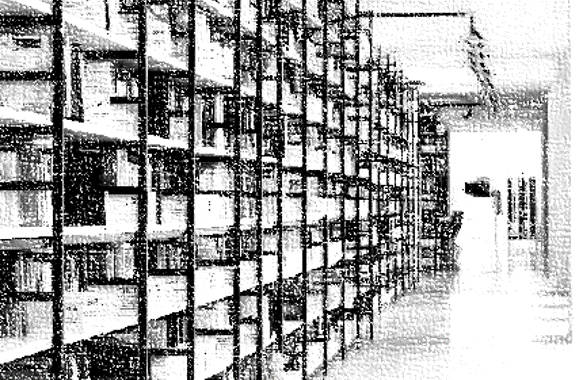Using RFID in a Library Application
SageData is based in Ottawa, Ontario, Canada
Introduction
Our systems are all about people, places and things. There is some thing
that
needs
to be
managed. It may be in a certain place, or moving regularly between different places.
And a person is responsible for it, though that responsibility may change from time to time.
A Library Application is a good example of the above.

Barcodes have many advantages, especially when compared to manual or card systems. They
make
identification of an item easy, fast and accurate. They are inexpensive. They
are easy to apply. The technology is mature and well understood. Readers are inexpensive and
reliable.
So for many applications, a system based on barcodes is a cost efficient solution. We
have provided many such systems, to Federal Government departments, and to private industry.
They
are
good, but RFID, has become more mature, and offers some advantages in
many applications.
RFID systems use tags which include electronic circuitry that can detect when they are
being read, and are able to transmit a signal to the reader which identifies the
specific tag.
Items to be identified are marked with an RFID tag. So, to track people, places and things, we need to identify the individual taking responsibility for the items, and the items themselves. In a library application, this means issuing each borrower with a card containing an RFID tag, and each book, DVD or other item to be tracked will have an RFID tag attached.
Reading the tags
This can be done with a fixed or mobile reader. In a typical library situation, a fixed mount reader would be used, attached to a computer which is used to register and display all actions. To check out a book or several books, the books and the recipients ID card are placed on the reader. A screen display will confirm the identity of the recipient, and provide a count and listing of the books issued.
Returns
The return process is the same as the issue process, except that the librarian will place their card (or a special card provided for the purpose) with the books. All transactions, issues and returns, are logged.
Reporting
The system can provide a wide variety of reports, including issues by individual, by day or by month, listing of most popular loans, and of course, items overdue for return.
Summary
Both barcode and RFID systems provide better control and reduced costs of operation. RFID is perhaps the easier to use, especially when tracking multiple items. A single read captures all items. If you need to know more about using our systems for managing a library, please feel free to contact us for more information.
If you found this useful, you might also want to review:
-
documents tracking with RFID - a brief video
- an introduction to RFID
- RFID in a warehouse - a brief video
-
active RFID tags
QAOK3168-9
